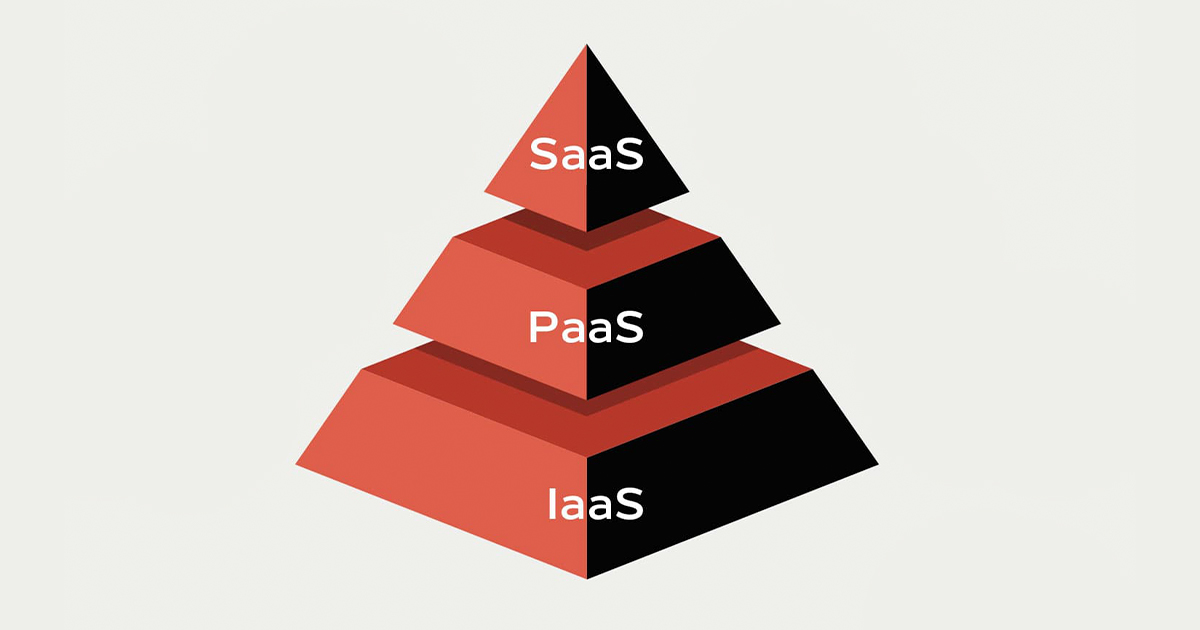In the age of digitisation and rapidly evolving technology, cloud computing has become a fundamental pillar of the IT landscape, providing organisations with efficient, scalable, and cost-effective solutions for their computing needs. This article delves into the three primary models of cloud computing: Infrastructure as a Service (IaaS), Platform as a Service (PaaS), and Software as a Service (SaaS).
Infrastructure as a Service (IaaS)
IaaS is the most fundamental level of cloud service. In this model, the cloud provider hosts the infrastructure components that are traditionally present in an on-premises data centre. These include servers, storage, networks, and operating systems. Instead of investing in the physical infrastructure, companies rent these resources as a fully outsourced service on a pay-as-you-go basis from a cloud service provider.
In an IaaS model, the end-user has the most control among the three cloud computing models. While the provider manages the underlying hardware and virtualisation layer, the user is responsible for managing the operating system, middleware, runtime, data, and application.
The scalability and flexibility of IaaS make it an ideal choice for start-ups and small businesses that prefer not to commit a significant amount of capital towards purchasing and maintaining hardware. Moreover, it is a suitable model for short-term projects that require a temporary increase in resources, as well as for companies with fluctuating workloads. Providers of IaaS include Amazon Web Services (AWS), Microsoft Azure, and Google Cloud Platform.
Platform as a Service (PaaS)
PaaS is a cloud computing model that provides customers with a platform to develop, run, and manage applications, without the complexity of building and maintaining the infrastructure typically associated with developing and launching an app. PaaS is a complete development and deployment environment in the cloud, including development tools, database management systems, business intelligence (BI) services, and more.
With PaaS, the cloud provider manages the underlying infrastructure (servers, storage, networks), as well as the middleware, development tools, database management systems, and more. The developer, in turn, manages the applications and services they’re developing, while everything else is taken care of by the provider.
PaaS is especially beneficial for developers who want to spend more time on their coding and less on administrative tasks, such as system maintenance and capacity planning. PaaS can improve the speed of developing an app, and allow the developer to focus on the application itself. Examples of PaaS providers include AWS Elastic Beanstalk, Google App Engine, and Microsoft’s Azure App Service.
Software as a Service (SaaS)
SaaS is a cloud computing model where the service provider delivers an entire software solution over the internet on a subscription basis. The cloud providers host and maintain the software application and underlying infrastructure, and handle any maintenance, like software upgrades and security patching. Users connect to the application over the Internet, usually with a web browser on their phone, tablet, or PC.
In the SaaS model, the user has the least amount of control since the cloud provider manages all aspects of the application, including the infrastructure, middleware, app software, and data. Users primarily control software configuration settings and their own data inputs.
SaaS is widely used in many business applications, including customer relationship management (CRM), human resource management (HRM), billing, sales management, and collaboration software. The SaaS model can be beneficial for small and medium-sized businesses that need access to sophisticated business applications but lack the resources to purchase and maintain software and hardware or to license software. Examples of SaaS providers include Salesforce, Google Workspace, and Microsoft 365.
Summary
Cloud computing models have revolutionised how businesses operate and deliver value. They provide a flexible, scalable, and cost-effective way to meet the computing needs of organisations of all sizes. While each of the three primary models – IaaS, PaaS, and SaaS – serve different purposes, they are not mutually exclusive and often overlap. Companies can use a mix of IaaS, PaaS, and SaaS based on their specific needs, allowing them to tailor their services according to their business requirements.
For example, a start-up company might initially use IaaS to avoid upfront infrastructure costs and focus on developing their core business. As the company grows and the business stabilises, they may move towards PaaS to reduce the time and resources spent on routine tasks, such as managing servers and databases, and to focus on application development. Finally, the company may also utilise SaaS applications for tasks such as email, customer relationship management, and financial accounting.
A common trend in recent years is the adoption of multi-cloud strategies, where businesses use multiple service providers to meet different technical or business requirements. A multi-cloud strategy can help businesses avoid vendor lock-in, increase system resilience, and leverage best-of-breed solutions.
Despite the numerous advantages, cloud computing models also come with their own set of challenges. Security concerns, data privacy, regulatory compliance, and the dependency on network connectivity are some of the issues that businesses need to address when adopting cloud services. However, with careful planning, the right strategy, and robust risk management practices, businesses can effectively leverage the power of cloud computing to drive their digital transformation.
In conclusion, the emergence and evolution of cloud computing models signify a shift in how businesses approach IT resources. By understanding the unique features and benefits of IaaS, PaaS, and SaaS, businesses can make informed decisions about how to leverage these models to achieve their objectives. As cloud computing continues to evolve, we can expect to see more innovative models and services that will further enhance business capabilities and efficiencies.
